sitting? Did you have to jump the car? And so on.
3. Car is towed in, during or after hours.
Sometimes, this makes for more problems. Did the tow operator try to start the car? What condition was the car in when picked up? If the car owner comes in with the car, was he/she driving and the car quit, or was it parked and wouldn’t restart?
There are so many more questions that can be asked. For now, with those few answers, at least the technician has a direction to go to start the diagnosis. The small steps should always be taken at the service counter.
NO-START CONDITION
As noted above, there are a few more questions that need to be asked at this point. I have been given repair orders over the years with just “Diagnose no start” as a request, gone to the vehicle and it started right up. Then where do you go? Since a no-start can be caused by so many different variables, and involve a number of different systems, fully knowing the symptoms will help guide the technician in his/her diagnosis.
NO-CRANK PROBLEM
When we think of “no start,” “no crank” is usually what comes to mind first; and if verified by talking to the car owner, this is sometimes the easiest to diagnose. Some customers have to be prodded into verifying that a crank exists — the standard “does it go whirrrr, whirrrr” or is there no noise when the key is turned. A Q & A is needed. The actual diagnosis can begin once you verify that the problem is a no-crank.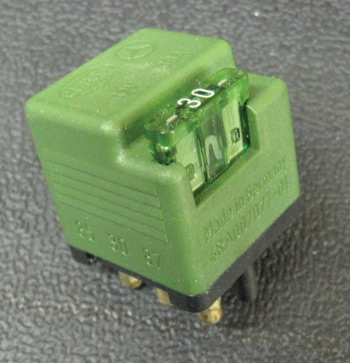
When I went looking for pattern failures for M-B vehicles for no-start problems involving “no crank” symptoms, the most common failure was battery failure or discharge. It’s also been my experience that very seldom is the problem related to the starter itself (see Photo 3).
We should all know how to test a battery by now, and with the advent of portable jump starters, most battery failures can be diagnosed right in the parking lot. If the battery is dead, or just too weak, the systems needed to start the car just can’t work. Even a simple hand-held load tester will tell you what you need to know about a battery’s ability to take the load needed to start a car.
Of course, there are many reasons why a battery will fail, so that is the secondary question that needs to be answered. If the car will start with a jump, then the question becomes one of finding the reason for the battery failure. Obviously, with the number of electronic systems on cars, batteries don’t tend to last as long as in the past. The battery must be at or near full charge at all times to operate correctly.
You can decide for yourself what “average” battery life is, and based on the number of battery choices on the market today, what will best fit your customers’ needs, if a new battery is warranted. A general rule would be if the battery is more than a year beyond the “prorated” life, a replacement is probably a good idea, no matter what caused the failure. 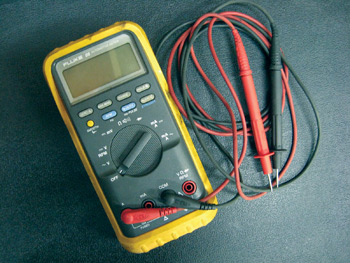
One of the most common patterns for no-crank failures is a battery (parasitic) drain that not only drops the voltage too low, but, in turn, shortens the battery life. Testing for a drain today is a little more involved with the number of circuits that stay “live” for short or longer durations after the car is turned off. You will need a couple of testers to properly do a draw test. 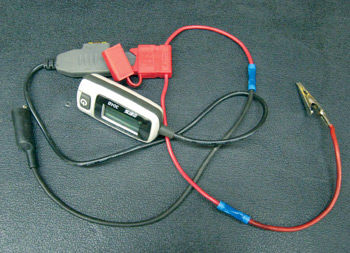
Most automotive meters have two amperage test ranges. Amperage under 10 amps is typical, and under 2 amps for more detailed tests. With the number of processors in a Mercedes-Benz today, testing for a key-off load will either blow the fuse in the meter (see Photos 4 and 5) or cause it to overload until certain loads time out. The best plan is to make sure all lights are off, windows are open, locks are unlocked, any accessories are totally off and the key is out of the ignition.
With the usual trunk-mounted battery, that also means making sure that the latch is “closed” so the trunk light will be off. Though most accessory circuits should time out in less than a minute, a longer time period should be used for testing. Also, certain systems such as automatic climate control, light sensors, alarms and underhood cooling programs can start (and fail to shut down) long after the normal time-out period, depending on how a particular car is programmed or ambient conditions affect their operation. If a considerable draw appears after normal time-out occurs, it could be a condition that can be resolved by programming a particular system.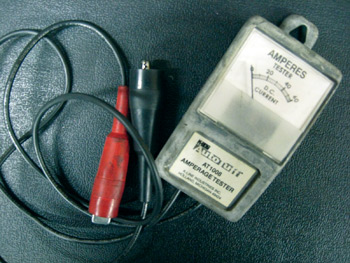
For draws beyond the scope of a digital meter, you can use an analog meter (see Photo 6) until time-out occurs, and then insert the more sensitive instrument into the circuit to read the actual draw. Most batteries today can handle up to 50 milliamps of draw for 48 hours, but beyond a couple of days, even a premium battery will have a problem on cars with automatic lights, climate control and comfort memory (seats, steering wheel position, etc.). You will need to check a service manual or on-line tech information for acceptable parasitic draw for the particular car you are working on, if that information is even available.
NO FIRE
“The engine goes…whirr, whirr but doesn’t catch, doesn’t start. I can’t make it go, or nothing happens when I step on the gas.” The complaint can be all over the map, and the customer’s gender doesn’t seem to matter. All they usually know is that it was running, and now it isn’t. This is where diagnosis becomes expensive if the first step isn’t taken at the front counter or over the phone. It also makes it difficult to even start diagnosis if the problem is intermittent.
Does this problem happen every time you try to start the car? Is it more likely when the car is first started in the morning, or does it happen after you’ve driven and then parked for awhile? Has the check engine or service light been on? The list of questions can pinpoint at least a failure pattern, or, if it is a first-time experience, quite a few items can be excluded if the right questions are asked.
For the technician, there should be a plan, based on the answers to the above questions. The basics are always going to be fuel, electrical and compression. With modern cars, this is where a scanner can pinpoint a problem, even if the check engine light is or isn’t on.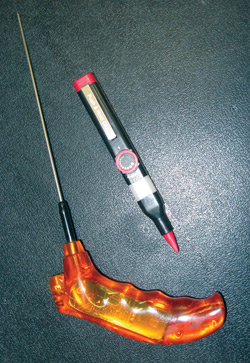
A few basic test tools can be used to check for fuel pressure, ignition and FI pulse (see Photo 7). Internal engine faults are pretty rare on M-Bs, unless normal or reasonable maintenance is not performed. When all else seems OK, a look in the oil filler that reveals a sludge problem may be a clue to a larger problem.
NO RESPONSE
More and more complaints are coming in about communication and immobilizer faults.
With Mercedes cars, the most common pattern failures for communication problems are wiring faults. Caused by corrosion, insulation failure or abrasions, this has been a long-standing problem. One of the best diagnostic tools you have at the onset of communication problems is your eyes. Look for any signs of repaired or unsecured harnesses. Obvious signs of abraded wire loom or exposed wires (rodent damage) can be a clue to a system failure. What might seem to be unrelated could be a part of a no-start condition, especially on cars with CAN communications.
Immobilizer codes are always difficult for a small shop without the equipment to access the onboard systems necessary to reset or re-enable the Drive Authorization. There are a number of different TSBs for various models, but one of the first things to try is always going to be another key for the vehicle. Also, a dead battery can cause the alarm system to disable the DAS. A tow to a dealer is recommended to reboot or repair.
FINISHING UP
No-start diagnosis can eat up a lot of shop time, and customers’ money, if a diagnostic plan is not set up to handle the basics first. On late models, it is important to have access to up-to-date information and some way to get pattern failure information for a given model. The variables of no-start problems make it necessary to take small steps at first. Spending hours on a diagnosis that is going to require dealer involvement is not the way to keep your customers.
Do the basic checks, then decide how and whether to proceed. Maintaining contact with other local shops and developing dealer relationships is a good way to stay “connected” when you just can’t get started on a no-start.












